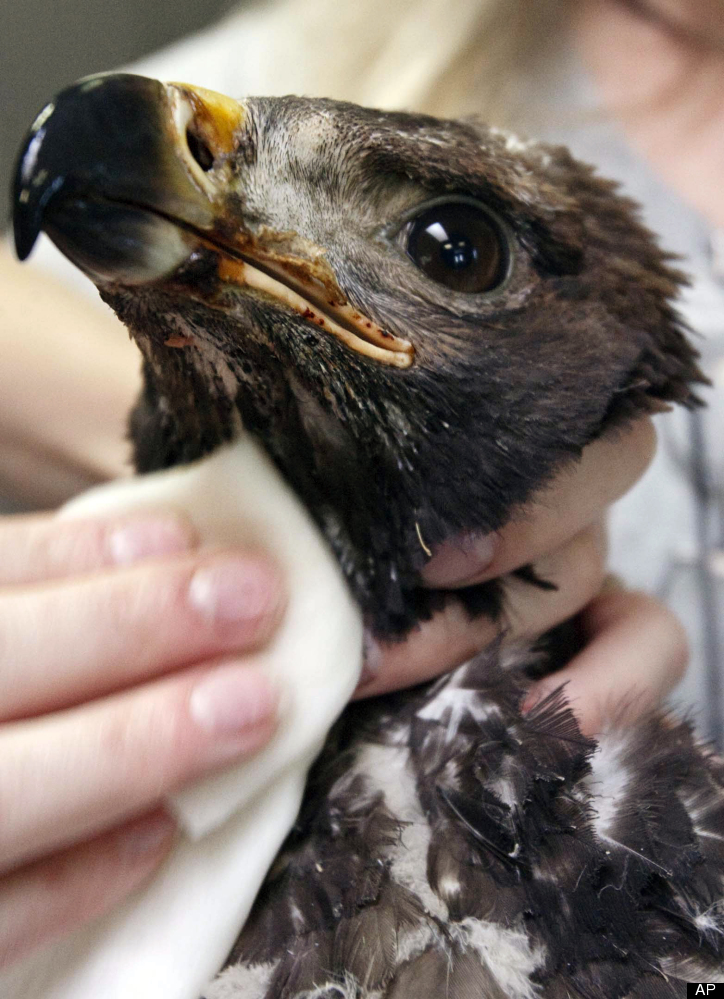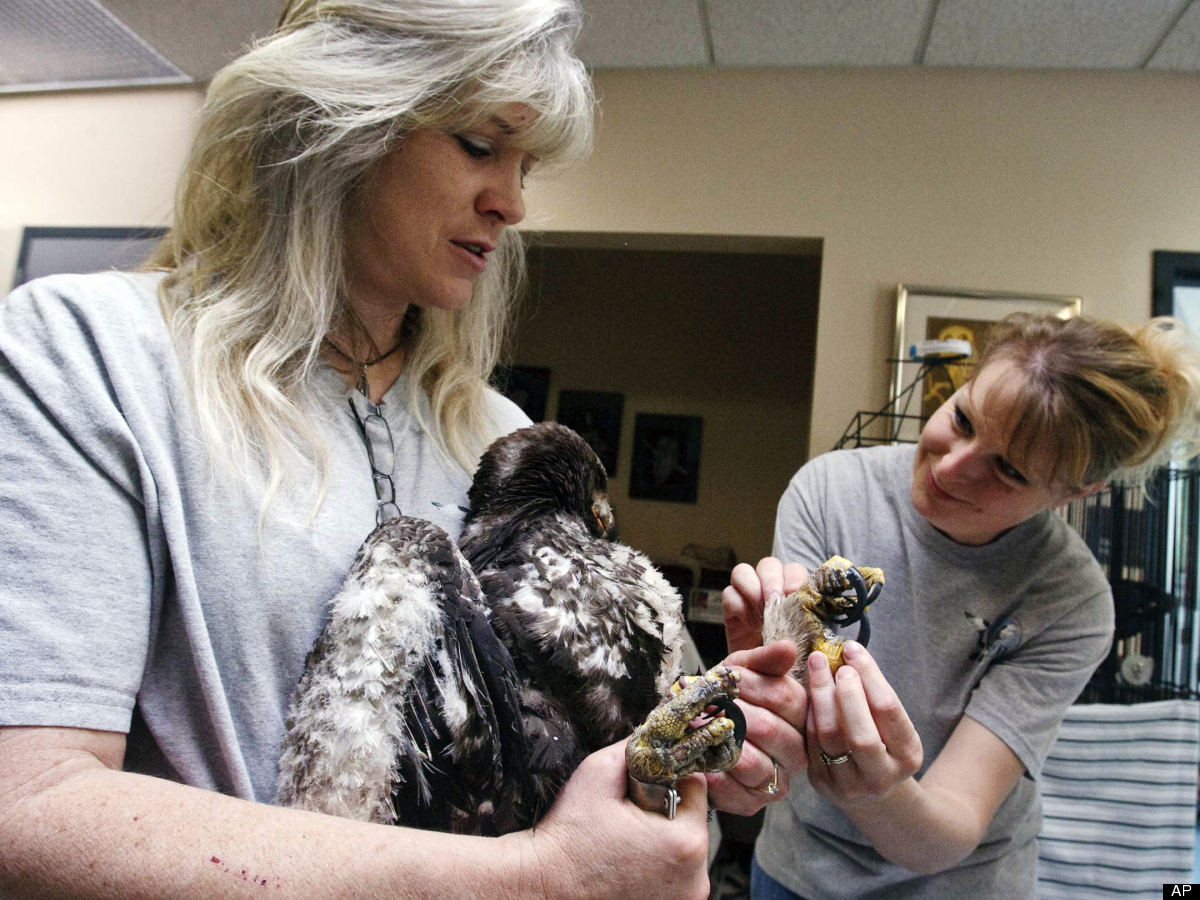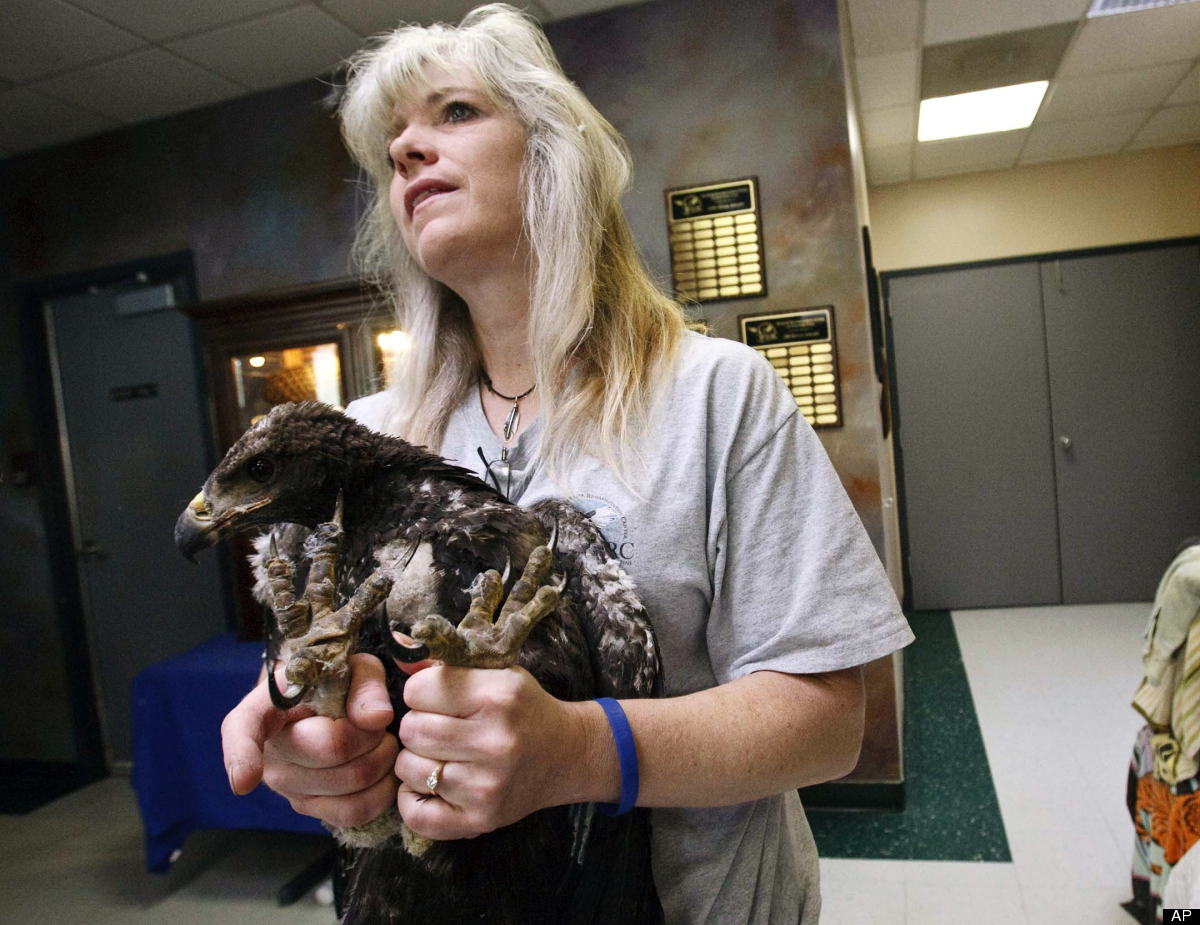Baby Golden Eagle Survives Flames
-

SALT LAKE CITY -- A baby golden eagle is recovering at a wildlife rehabilitation facility after officials say it miraculously survived a Utah wildfire last month.
But the veteran Utah Division of Wildlife Resources volunteer found the burned bird alive on June 28 behind a charred tree, about 25 feet below the nest that was burned to a crisp in the 5,500-acre Dump Fire near Saratoga Springs.
"I thought there was no chance he would be alive. I was stunned when I saw him standing there," Keller said. "I thought maybe I could rebuild the nest a little bit, but I took a good look at him and realized that was not going to happen."

The 70-day-old eaglet had suffered burns on his talons, beak, head and wings. His flight feathers were melted down to within an inch or two of his wing and tail. He's very underweight at just over five pounds.
Keller realized the eagle would not fly for at least a year and that the parents eventually would stop providing food. Not a stick from the nest was left after the fire sparked by target shooters swept through
"I've seen nests burn before, but this is the first year I have seen one burn with young in it," he told the Tribune. "They are usually long gone and flying when fire season starts."

After permission was secured from state and federal wildlife agencies, the Wildlife Rehabilitation Center of Northern Utah in Ogden assumed care of the eaglet this week.
"I wasn't sure he was going to make it," said DaLyn Erickson, executive director of the center. "He kind of had that look like he may have given up."
But the eagle named Phoenix has since taken to eating beef heart and venison. He's treated several times a day for his burns and seems to be gaining strength.

"He looks good now," said Amber Hansen, a member of the center's board of directors. "But we think if he had been there (at the nest site) another day, he probably would not have survived."
What seems to have saved his life during the fire was the insulation offered by his down feathers and once-thick body, according to the wildlife rehabilitation center.
Officials hope the bird can be released back into the wild next year, but say it's too early to tell about its future. Volunteers will work to keep him as wild as possible.
"It depends on how much follicle damage there is to his wings," Hansen said. "If they are not too burned, he should be able to molt into new feathers next year and hopefully be able to fly."
-
eagle are just strong, they dun die easily